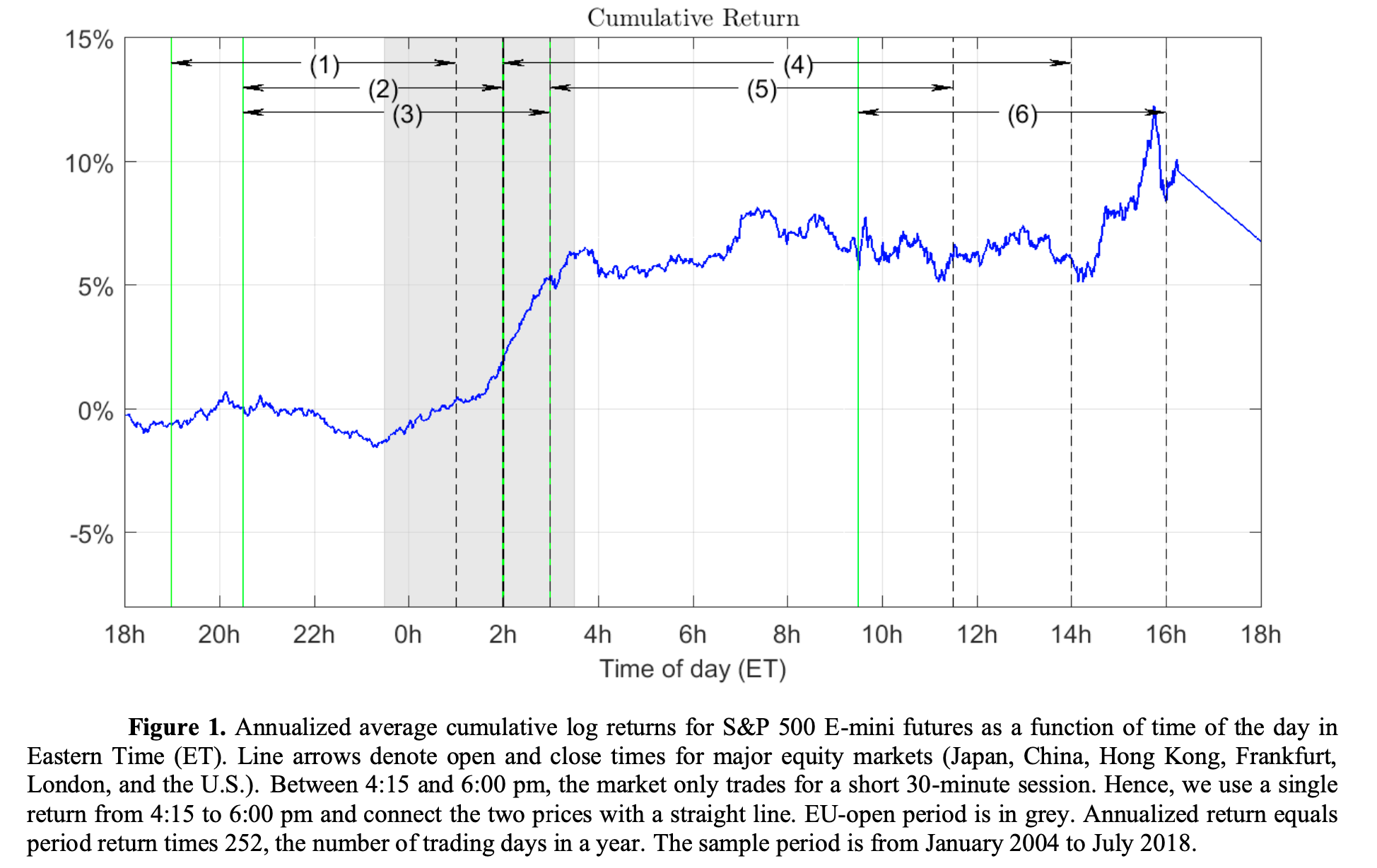Performance
- Key Result: The entire average market return is concentrated in the four-hour window around the European market open (11:30 PM – 3:30 AM ET).
- Annualized Return: 7.6% during this window, while returns are nearly zero for the remaining 20 hours.
- Sharpe Ratio: 1.67 for this period, significantly higher than the full-day market Sharpe.
Key Idea
Stock market returns are not evenly distributed throughout the trading day. Instead, the majority of excess returns are generated during a specific four-hour window before European markets open. This return pattern is consistent across years, months, and weekdays.
Economic Rationale
- Uncertainty Resolution Hypothesis:
- Overnight, uncertainty accumulates as fewer investors are active.
- When European investors enter the market, they incorporate overnight information, resolving uncertainty.
- This causes price increases, explaining why returns cluster during this period.
- Supporting Evidence:
- VIX futures rise during the Asian session (reflecting increasing uncertainty).
- VIX futures drop sharply during the EU-open period, indicating uncertainty resolution.
Practical Applications
- Trading Strategy:
- Buy S&P 500 E-mini futures before 11:30 PM ET and close the position at 3:30 AM ET.
- The strategy is profitable even after transaction costs and has a Sharpe ratio higher than the buy-and-hold alternative.
- Market Timing for Institutions:
- Large institutional trades should be timed before EU-open to capture this return anomaly.
How to Do It
Data
- E-mini S&P 500 futures (ES)
- VIX futures
- Sample period: January 2004 – July 2018
- Intraday minute-by-minute price data from CME
Model/Methodology
- Identify high-return windows:
- Compute annualized returns by minute over 24-hour trading sessions.
- Compare cumulative returns for different time windows.
- Measure uncertainty resolution:
- Track overnight VIX movements and correlation with EU-open returns.
- Test robustness:
- Adjust for microstructure biases (bid-ask bounce, market impact).
- Control for external shocks (FOMC days, macroeconomic news).
Strategy Execution
- Enter Long Position: Buy S&P 500 E-mini futures at 11:30 PM ET.
- Exit Position: Close at 3:30 AM ET before London open.
- Risk Management:
- Avoid trading on European holidays (returns are lower).
- Use conditional trading based on overnight volatility and VIX movements to improve Sharpe ratio.
- Capacity Estimate:
- The strategy can scale up to $9 billion in exposure, generating $50 million in annualized after-cost profits.
Key Figure

Figure 1 shows cumulative market return across 24 hours.
- Returns remain flat throughout most of the day except for the EU-open period.
- No other trading window exhibits statistically significant positive returns.
Paper Details
- Authors: Oleg Bondarenko & Dmitriy Muravyev
- Publication: SSRN Electronic Journal, 2020
- Link: SSRN Abstract

